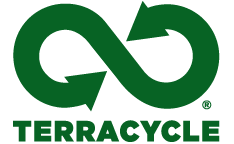Compostable packaging. Two words that, for much of 2010, brought cringes to the faces of American packaging designers. Why? We all know what a disaster <
http://www.treehugger.com/files/2011/02/big-lessons-from-the-sunchips-packaging-fiasco.php> the first Sunchips compostable packaging launch was, at least in the U.S. It was the first high-profile mainstream effort to do so, and consumers crumpled it quickly because of the high decibel bag. Thankfully, Frito Lay didn’t just call it quits, but instead came back fighting with a newly quieter bag <
http://www.packagingdigest.com/article/512905-Ta_da_Frito_Lay_presents_quieter_compostable_SunChips_bag.php> , cautiously being rolled out now.
But let’s say that issue gets fixed and other mainstream brands find their courage to go the compostable or biodegradable route, too. There’s a larger problem here which, with for all the showboating about what a silver bullet for CPG these options are, needs to be addressed: It’s a pain in the ass to actually get this supposedly compostable packaging to actually compost!
You and I both know this: Unless you happen to have professional level facilities or be the most skilled backyard composter in four states, you simply won’t get the results that people are expecting to happen. And these unmet expectations will lead to a deeper, less vocally expressed disaffection for green products that’s more difficult to address.
So what can be done?
One option as I see it is to develop curbside compostables collection by all municipalities. Make it as normal as putting your recyclables in the blue bin. Or if that’s not looking feasible under the current infrastructure where you are, have a private company do it in tandem with the current recycling/waste collection.
Before you write this off as an impossibility in today’s economy, look at San Francisco’s success <
http://www.treehugger.com/files/2009/10/mandatory-composting-law-success-san-francisco.php%5D%20in%20implementing%20exactly%20this.%20%5Bhttp://sunsetscavenger.com/residentialCompost.htm> in implementing exactly this <
http://sunsetscavenger.com/residentialCompost.htm> .
Yes, it did in part involve phasing in a law that it’s mandatory that all compostables get put in the green bin, which may or may not fly in other places. But what we’d all do well to learn from is how San Francisco has monetized the composting. They’ve made it a desirable, locally sourced material for farmers, gardeners and the increasing number of restaurants that grow their own food and can now further tout their local credentials.
Finding customers for compost is much easier than the intricate web of suppliers and buyers of recyclable materials.
There’s another solution:
You may not know it, but TerraCycle started business making worm compost based gardening products. So yeah, we know a thing or two about composting! With our well established packaging collection Brigades <
http://www.terracycle.net/brigades> , we could just as easily begin collecting your company’s compostable packaging.
This does two things:
It bypasses additional cost to local municipalities to start composting programs for the increasing number of compostable packaging options, and you avert consumer frustration with their home efforts lack of success. More gets successfully composted, and Brigade participants get paid per piece collected, benefitting a place of their choice: their school, community group or a favorite charity/NGO.
Or do we need to think beyond composting?
Given that sustainability poster child Portland, Oregon, is just now doing tentative testing of curbside compostables collection <
http://www.kgw.com/news/local/Portland-Announces-Curbside-Compost-Collection-90796139.html> , it’s clear that this route is going to take a while. We’re happy to do our part, composting packaging and upcycling it, but we’re only part of the answer here. It’s time for you as packaging designers to take the reins, coming up with options that always, always keeps in mind consumers first, along with applicability to current systems, and acceptance by stores that will stock these items.
Frito Lay is to be applauded for having taken the initiative, bravely stepping forward as the first mass market food product with compostable packaging. The consumer reaction was unfortunate, but it’s proved a learning experience, both for Frito Lay, and all of you out there working on new, greener packing options.
So readers, let’s have it. How can packaging be improved to work better all around? How can we all help composting and the collection of it be as normal and everyday as recycling has become?
